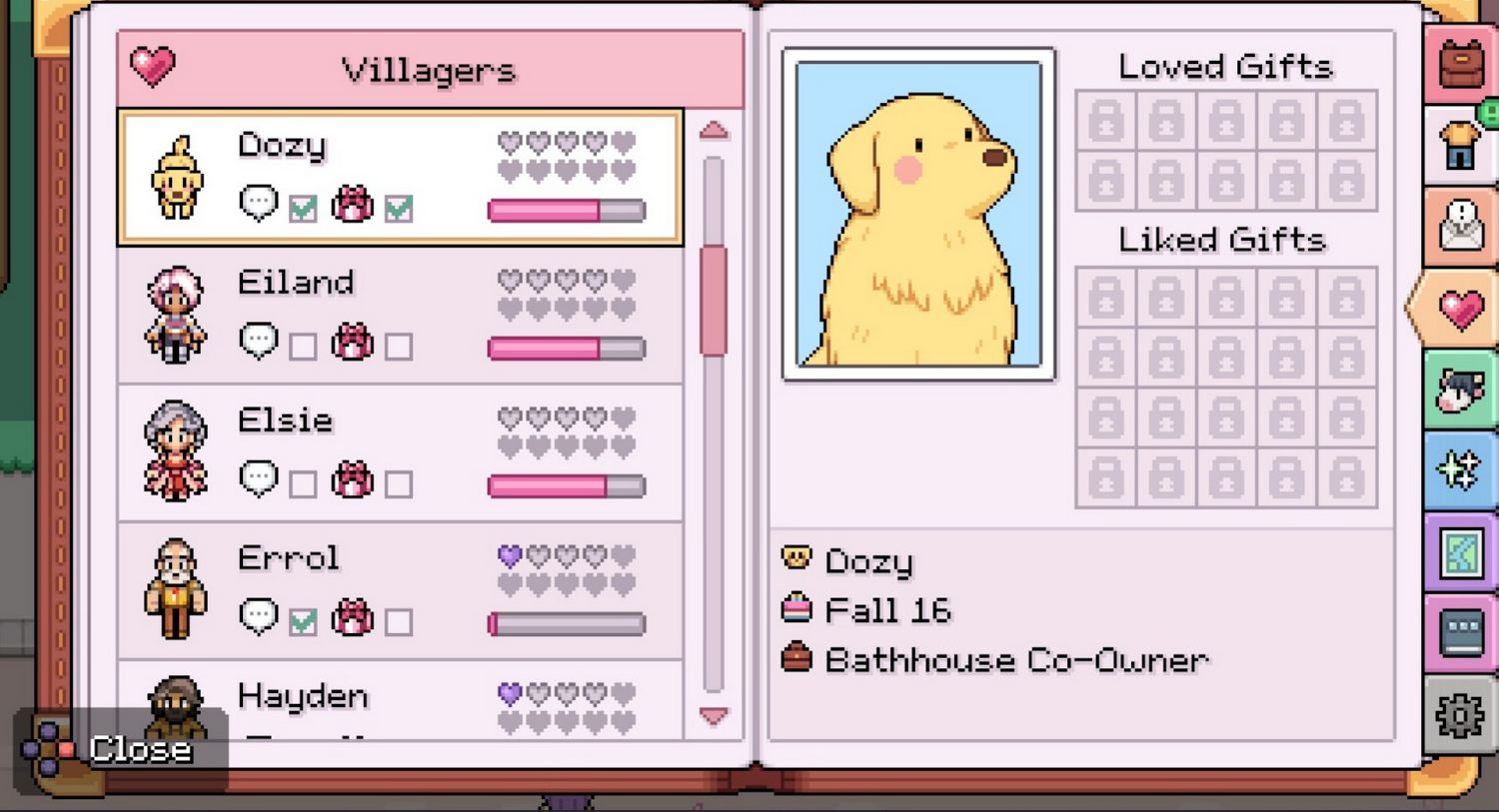More Than a Copycat: How Fields of Mistria Cultivates Its Own Identity
Popular Now
 Poppy Playtime
Poppy Playtime
 Grand Theft Auto VI
Grand Theft Auto VI
 Stumble Guys
Stumble Guys
 R.E.P.O
R.E.P.O
 League of Legends
League of Legends
 Rust
Rust
 Auto X Drift Racing 3
Auto X Drift Racing 3
 Schedule I
Schedule I
 Roblox
Roblox
 The Legend of Zelda
The Legend of Zelda
 In the expansive and increasingly crowded field of farming and life simulation games, any new title immediately faces the shadow of giants like Stardew Valley and Harvest Moon. However, the recent release of Fields of Mistria has proven that a game can draw inspiration from the best in the genre while cultivating a robust, unique identity that allows it to stand proudly on its own. While it embraces the beloved formula of farming, mining, and dating, Fields of Mistria introduces fresh mechanics and a world brimming with charm and original lore that sets it apart.
In the expansive and increasingly crowded field of farming and life simulation games, any new title immediately faces the shadow of giants like Stardew Valley and Harvest Moon. However, the recent release of Fields of Mistria has proven that a game can draw inspiration from the best in the genre while cultivating a robust, unique identity that allows it to stand proudly on its own. While it embraces the beloved formula of farming, mining, and dating, Fields of Mistria introduces fresh mechanics and a world brimming with charm and original lore that sets it apart.
Developed by an indie studio, the game immediately strikes a familiar chord: the player inherits a dilapidated homestead, tasked with restoring the land, engaging with a quirky village full of eligible bachelors and bachelorettes, and delving into mysterious ruins. But where many Stardew Valley-likes simply replicate the structure, Fields of Mistria uses it as a foundation to build innovative and refined systems.
Farming with a Twist: The Power of Elemental Magic
The most compelling differentiator in Fields of Mistria is the integration of Elemental Magic into the core farming loop. While Stardew players rely on sprinklers and upgrades, Mistria introduces a deep, skill-based magic system:
- Elemental Infusion: Players can learn spells to infuse their crops with elemental energy. A water spell can instantly hydrate an entire field, while a fire spell can rapidly clear large patches of weeds or speed up the cooking process.
- Customizing Growth: Different crops thrive under different elemental influences, encouraging strategic planning. This mechanic adds a layer of complexity beyond simple seasonal planting, turning farming into a puzzle that requires both brawn and spellcasting finesse.
- The Mist System: The game features unique weather and environmental phenomena, specifically the recurring “Mist.” During this period, magical effects are amplified, granting bonus effects to spells and crops. This injects a high-stakes, rewarding element into the daily routine.
 A Village Full of Secrets: Deeper Relationships and Lore
A Village Full of Secrets: Deeper Relationships and Lore
The residents of Mistria are not just static figures waiting for a gift; they are integral to the game’s unfolding lore. While Stardew focuses heavily on individual story arcs, Mistria weaves the villagers’ lives into the town’s central mystery:
- The Cataclysm Lore: The town of Mistria is recovering from an ancient, magical “Cataclysm.” The relationship mechanics often tie into discovering how each villager’s family was affected by this event, giving the characters a historical depth that goes beyond their day-to-day quirks.
- Group Interactions: The game places a greater emphasis on dynamic, group interactions. Certain villagers have shared schedules and activities, and players are encouraged to participate in community-wide events that don’t just revolve around holidays but around rebuilding and investigating the town’s past.
- A Robust Dating Pool: The selection of potential partners is diverse and well-written, with high-quality character portraits and a focus on showing, not just telling, their development. The final wedding event is a highly customizable and celebrated moment within the entire town, feeling less like a private transaction and more like a true communal milestone.
Beyond the Farm: Exploration and Progression
Exploration in Fields of Mistria is tied to the game’s core magical premise. The familiar mining cave is replaced with the Rift Dungeons, which are less about brute-force combat and more about using elemental spells to solve puzzles, navigate dangerous terrain, and uncover rare magical resources. Progression in the game isn’t just about tool upgrades; it involves improving your magical abilities, which in turn unlock new areas of the map and new tiers of crafting. This makes every in-game action—from planting seeds to battling foes—contribute to a single, interconnected progression path.
In conclusion, while Fields of Mistria clearly owes a debt to the games that pioneered the genre, it demonstrates a confident originality. By successfully integrating elemental magic, deeper lore, and complex world interactions into the beloved farming and life-sim structure, it has carved out a unique and deserving spot for itself. It’s not simply a tribute; it’s a worthy successor that deserves the attention of any player looking for a refreshing and genuinely innovative take on the genre.










